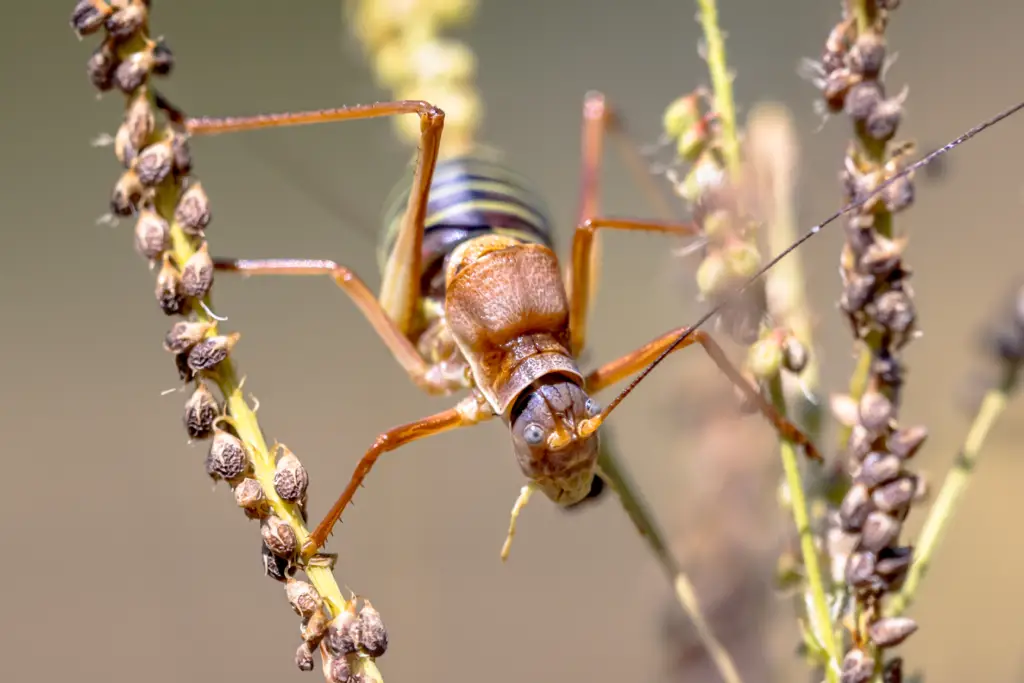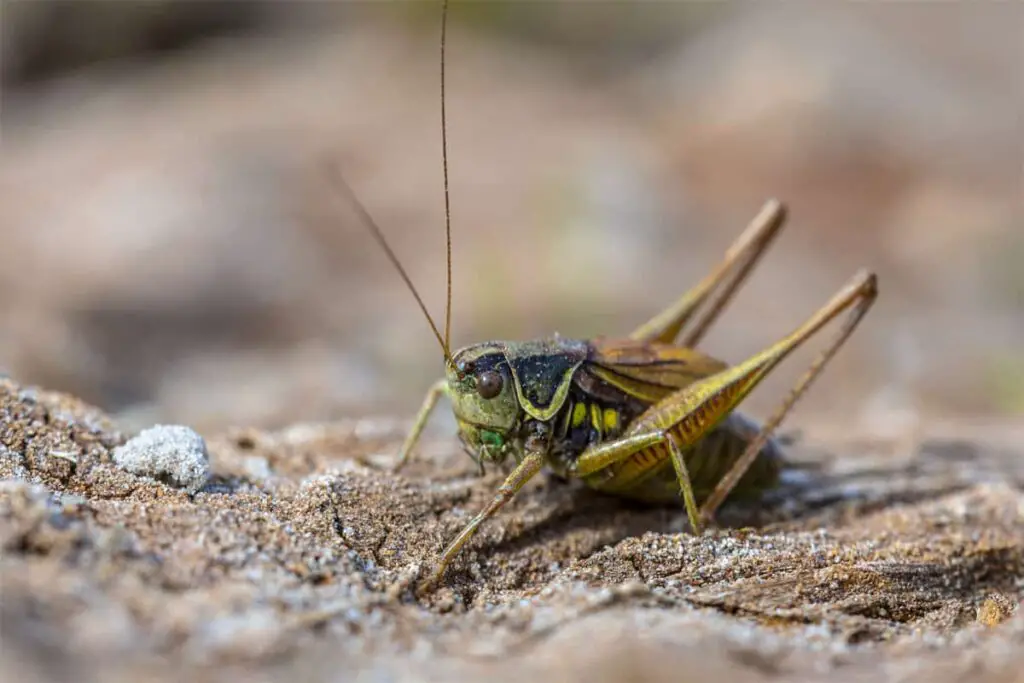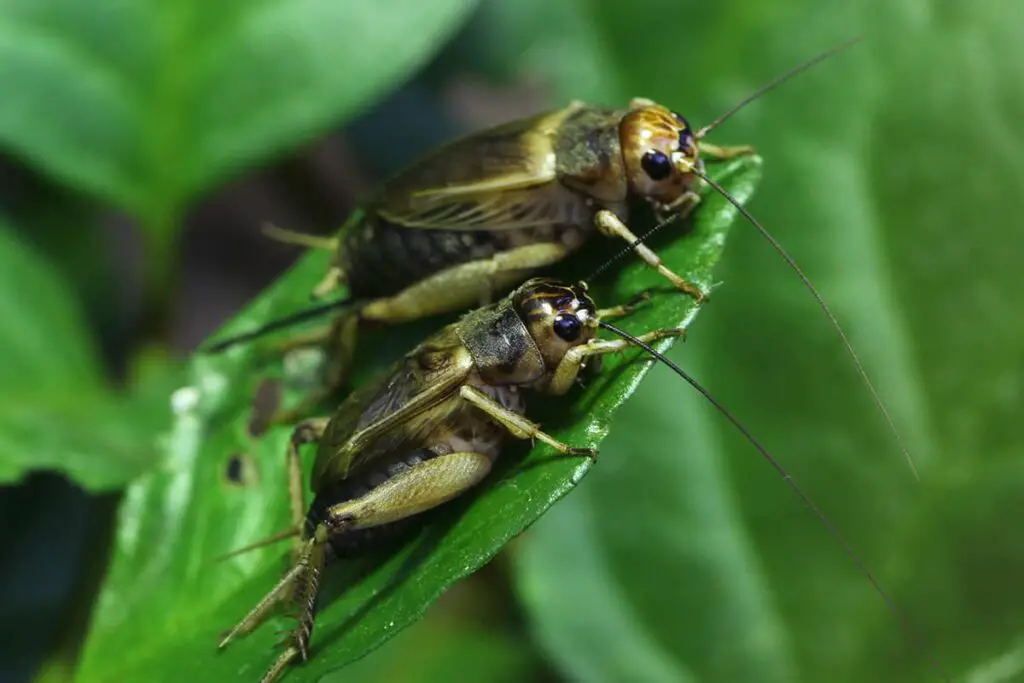
Identifying the various types of crickets can be quite the adventure. I’ve always been intrigued by these chirping creatures that seem to be the soundtrack of summer nights. Each cricket species has unique characteristics, and learning to tell them apart deepens my appreciation for these small but significant insects.
When I set out to differentiate these species, I start by observing the physical traits, such as body size and color, the length of their antennae, and the patterns on their wings. Some crickets are less than an inch long, while others stretch over two inches. The sounds crickets make are also a helpful tool for identification. Each species has its own chirp, and with a bit of practice, you can learn to recognize them just by listening.
Beyond curiosity, knowing how to identify crickets is practical for managing them in and around your home. Certain types might be welcome in the garden for their pest control benefits, while others are considered more of a nuisance. Understanding these distinctions helps me make informed decisions about the ecosystem in my backyard.
Crickets Overview
In this section, I’ll guide you through recognizing different types of crickets by examining their physical features and understanding where they live and thrive.
Physical Characteristics
Crickets are fascinating insects known for their long antennae and remarkable jumping ability, often covering great distances relative to their body size with their six legs. These creatures vary in color, typically found in shades of brown or black, and their size can range from less than an inch to over two inches in length. A distinctive feature of crickets is their chirping sound, which is produced when males rub their wings together. This behavior is not only captivating but also serves as a means of communication among them.
Habitat and Distribution
Crickets are incredibly adaptable insects, found in diverse environments ranging from grasslands and forests to human dwellings. Their distribution is global, with species thriving in nearly every part of the world, excluding the coldest regions. The habitat preferences among crickets can vary widely; for instance, the African Cricket is native to South Africa, demonstrating these insects’ adaptability to different climates and ecosystems. Common house crickets are also known to venture into human homes, where their presence is often made known by their distinct chirping, particularly during nighttime.
This broad range of habitats highlights the versatility and resilience of crickets as a species.
Identifying Cricket Types
To effectively identify different cricket species, I focus on their unique physical characteristics and behaviors that distinguish them from one another.
Field Crickets
My encounters with field crickets often take place outside, as they prefer grassy fields and open ground. When identifying them, I look for their dark brown to black bodies and robust size, which typically ranges around 1 to 1.5 inches in length. More insight on their identity is available with these Easy Identification Guide with Pictures.
House Crickets
House crickets, on the other hand, have made their presence known inside my home. These crickets are lighter, usually a pale brown to yellowish-brown, and are adaptably smaller, about 3/4 to 7/8 inches long. Their drawn-out chirps are made at night, which can serve as a practical indicator for recognizing them. For a clear chirp, reference this guide.
Tree Crickets
When I shift my search up to the foliage, I’m generally on the lookout for tree crickets. These often green, translucent-looking crickets are relatively small and slender. Their penchant for climbing plants and shrubs during summer nights makes their subtly unique, high-pitched trilling easy to identify.
Mole Crickets
Lastly, the mole crickets are quite distinctive with their ‘mole-like’ appearance, characterized by front legs adapted for digging. Their bodies, usually 1 to 1.25 inches long, are brownish and more suited for burrowing in soft, moist soil. They’re less often seen but more felt, given their underground lifestyle and the damage they can cause to roots and turf.
Behavioral Identification
To truly differentiate crickets, I focus on their behavior, which provides clear indicators of their species. This includes listening to their chirping patterns and observing their mating rituals.

Chirping Patterns
Crickets are famed for their chirping sounds, which males produce by rubbing their wings together in a behavior called stridulation. The rhythm and frequency of these chirps can vary distinctly among species. For example, the common house cricket chirps more frequently when temperatures are higher, which can help identify them. Whereas field crickets might have slower, more repetitive chirps that help differentiate them from their house-dwelling relatives.
Mating Rituals
During mating seasons, cricket behavior is especially pronounced. Male crickets often engage in distinct rituals to attract females, like producing specific chirps or performing dances. For instance, the snowy tree cricket is known for its consistent tempo, which has even been used as a rough thermometer—counting the number of chirps in 14 seconds and adding 40 gives a rough approximation of the temperature in Fahrenheit. Observing these rituals gives me a richer understanding of cricket behavior and helps distinguish between species.
Common Misidentifications
I find that distinguishing between similar-looking insects can be quite tricky, especially when dealing with crickets, which are often confused with grasshoppers and katydids. Let’s clear up some of that confusion.
Crickets vs. Grasshoppers
Crickets and grasshoppers may seem similar at first glance, but there are key differences between them. Crickets are typically nocturnal and are known for their distinctive chirping which is produced by males rubbing their wings together to attract females. They have long antennae, often much longer than their body, and their bodies tend to be more cylindrical and somewhat flattened.
On the other hand, grasshoppers are usually active during the day, and they create sound by rubbing their hind legs against their wings. Their antennae are much shorter compared to the length of their body, and they have a more robust build. Grasshoppers are also excellent jumpers thanks to their powerful hind legs.
Crickets vs. Katydids
In the matchup of crickets versus katydids, the differences are slightly more subtle but still noticeable. Crickets generally have a body color that ranges from brown to black and can be identified by their round heads and uniformly thin antennae. They’re also known for their prominent ‘chirp’.
Katydids sport a vibrant green color, mimicking leaves which is their primary camouflage strategy. Their antennae are just as long as a cricket’s but are often thinner towards the end, and they have an oval-shaped body that really sells the leaf-like appearance. Katydids produce sound by rubbing their wings together, and their song can be quite musical, differing from the cricket’s chirp.
Frequently Asked Questions
In this section, I’ll address some common curiosities about cricket identification. Whether you’re a budding entomologist or just someone with a nighttime cricket chorus in your backyard, knowing how to distinguish between various cricket species can be quite fascinating and useful.
What are the distinguishing features to look out for when identifying common cricket species?
Look for the length of their antennae, the body shape and color, number of legs, and the presence or absence of wings. Crickets typically have long antennae and six legs. Their body can be brown or black, and they often chirp by rubbing their wings together.
Can you explain the differences between house crickets and field crickets?
House crickets are generally light yellowish-brown with three dark bands on the head, while field crickets are darker, often black, and have a more robust body. The primary habitat of house crickets includes indoor environments and they’re known for their incessant nighttime chirping, whereas field crickets are outdoor dwellers more commonly found in lawns and flowerbeds.
How can you differentiate between male and female crickets?
Male crickets are the ones who chirp, as they rub their wings together to attract females. Females can be identified by the ovipositor, a long, needle-like structure extending from their abdomen, which they use to lay eggs.
What are the various colors crickets can be, and what do they indicate?
Crickets can range in color from brown and black to yellow and green. Their color often indicates their natural habitat for camouflage, such as green crickets blending in with foliage.
What is the size range for the largest cricket species?
Some of the largest cricket species can be more than two inches long. However, most crickets you’ll encounter are smaller than this.
How do grasshoppers and crickets differ in terms of physical appearance?
Grasshoppers have shorter antennae compared to crickets and generally have a more robust body. Also, their hind legs are typically larger and more muscled, aiding in their ability to jump long distances. Crickets’ sounds are created by wing movement, whereas grasshoppers create sound through leg rubbing.
Driven by a passion for those tiny creatures that rule our world, we at Bug Domain strive to be your go-to resource for information on insects.



